S. Prokofiev opera "Love for three oranges"
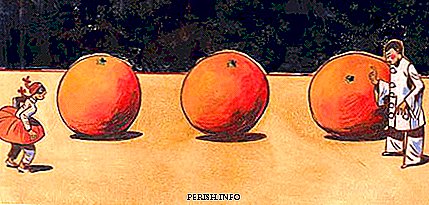
The opera "Love for Three Oranges" by Sergei Sergeyevich Prokofiev was the debut work that the composer put on stage. The performance was a smashing success, viewers from different cities and countries applauded standing and asked the actors for an encore.
This comic opera Prokofiev stood out among the rest with its cheerful mood, incredible energy and fun - the composer skillfully managed to convey the whole atmosphere of the radiant poetry of the Italian playwright Carlo Gozzi. With his creation, Prokofiev not only paid tribute to European traditions, but also built a plot that was perfect for Russian art.
Summary of the Prokofiev Opera "Love for three oranges"and many interesting facts about this work read on our page.
Characters | Vote | Description |
| King of Clubs | bass | head of the fairy kingdom |
| Prince | tenor | son of King Tref |
| Princess Clarice | contralto | a young relative of His Majesty |
| Leander | baritone | First Minister Appears in Peak King's Clothing |
| Truffaldino | tenor | court jester |
| Pantalon | baritone | close to His Majesty |
| Mage Chelias | bass | good wizard supporting the King |
| Fata Morgana | soprano | the evil sorceress on the side of Leander |
| Ninette | soprano | girls from oranges |
| Nicoletta | mezzo-soprano | |
| Lynette | contralto | |
| Arapka Smeraldina | mezzo-soprano | the maid |
| Farfarello | bass | devil |
| Cook | hoarse bass | giantess guarding oranges |
Summary of the Love for Three Oranges
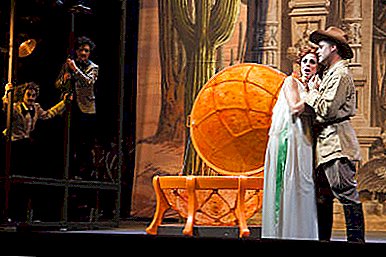
In an unknown country of card rules, the wise King of Clubs. His state grew and flourished, but real grief happened in the ruler’s family. His only heir fell ill with a terrible disease - hypochondria. The serious illness has exhausted the young man so much that he completely stopped smiling, rejoicing at life and did not see anything in the future except total darkness and pain. The renowned doctors shrugged and prepared the father for the imminent demise of his beloved son, but a loving parental heart believed that everything could be fixed. As soon as the rays of the sun rose over the card kingdom, the King was already inventing another way to cheer up his child. But all his efforts did not help - the desperate Prince could not find peace in his soul.
Meanwhile, the royal enemies have prepared another cunning plan to win a place on the throne. Minister of the Crusader Jack Leander sleeps and sees himself in the role of the ruler of the fairy kingdom. He is supported by a relative of King Clarice, who the cunning official promises to make the most beautiful card queen.
Evil sorcerers Chelius and Morgan connect magical powers to overthrow the king from the throne. However, it was thanks to them that the sad Prince laughed for the first time - the witch very ridiculously and ridiculously fell, and the youth simply could not hold back the smiles. The witch was so angry that with the help of a strong spell she woke up in him love feelings for the three oranges that belonged to the giant magician, Creonte. Under the influence of magic, the young man thought day and night about the desired fruits, and eventually went to the fairy garden to steal them from the giantess. To help him in this, the jester Truffaldino volunteered.
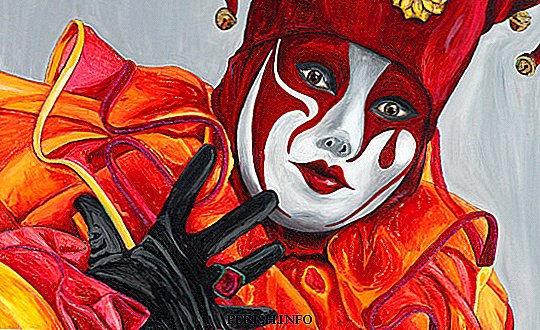
The magician Cheliy gives instructions to travelers - it is possible to open the torn fruits only near the water, after which he gives them a magic bow that will help them to distract the guard guarding the oranges. The plan is triggered, and the prince with a jester takes away the oranges. Only now the road home through the desert exhausted the heroes - the prince fell asleep, and Truffaldino decided to quench his thirst and eat juicy fruits. He opens two oranges, two of the most charming girls appear from them and ask him to drink. Not getting the desired water, the beauties die. The prince himself opens the last fruit, and a girl, Ninetta, also appears from it. But she miraculously manages to escape death, and she, together with the Prince, goes to the fairy-tale castle to his loving father. But the evil magician turns Ninette into a tremulous little dove, and instead of her sends a black servant Smeraldine to the prince. But still, the fairy tale has a good end - all the enemies got what they deserved, and the young prince and his fiancee got married and ruled the card kingdom for many years.
| Duration of performance | |
| I - II Act | III - IV Act |
| 55 min. | 55 min. |
A photo:
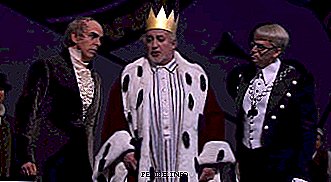
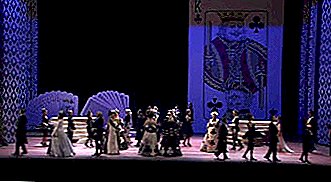
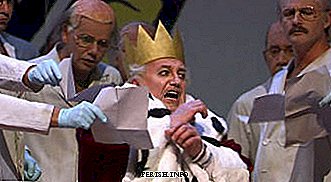
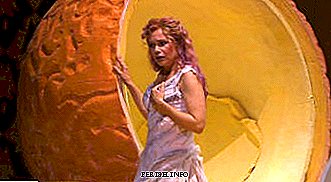
Interesting Facts
- Libretto to the opera wrote sal Prokofievand for the premiere in Chicago it was translated into French. The composer had to give up the English because he owned it very badly. But he didn’t have enough courage to put on a performance in his native language - the American audience was not ready to listen to Russian-speaking opera then.
- Before staging the composer was very nervous. Prokofiev was afraid to be misunderstood, because he created a very optimistic work on a careless story in difficult revolutionary years.
- The Russian audience saw "Love for three oranges" only in 1926 at the request of the Soviet government.
- During the reign of L.I. Brezhnev in the Soviet Union, there were two unacceptable opera works. It "The Tale of the Golden Cockerel" N. Rimsky-Korsaki and "Love for Three Oranges" by S. Prokofiev. And all because the elderly leaders were afraid of parallels with the narrow-minded old-rulers of these works.
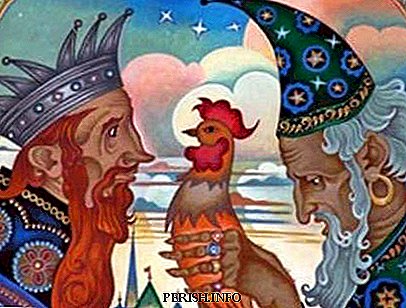
- In the creative heritage of Prokofiev there is another work entitled “The Love for Three Oranges”. This is a small orchestral suite, created on the basis of music from the opera of the same name. It consists of six parts: "Kooks", "Infernal Scene", "March", "Scherzo", "Prince and Princess" and "Escape".
- Before the premiere of the opera, Prokofiev received an offer from the owner of the orange plantation to advertise his products.
- After the first production, Prokofiev asked his close friend the composer M. Ippolitov-Ivanov for an opinion on his work. He did not say anything, and the next morning Sergey Sergeevich received a note in which his comrade admitted that he loved oranges only in pictures.
- The notes for the premiere of the play were released by the oldest music publisher Breitkopf & Hartel.
- The Leningrad Opera House planned to go on a grand tour to Paris with Oranges, but this idea was not destined to come true.
- Director Sergei Radlov compared Oranges with a frisky girl who got into the midst of serious and adult people.
- The opera "Love for Three Oranges" was the first work of Sergey Sergeyevich in the comic genre.
- One of the most unusual productions of "Oranges" is the performance of Dmitry Bertman, presented in "Helikon-Opera". The director's vision of the main characters is very modern - the Prince is an avid computer player, and the King is an entrepreneur with a case full of currency.
Popular arias and numbers from the opera Love for Three Oranges
Choir of medics (listen)
Marsh (listen)
Duet of Prince and Ninetta (listen)
Music
The opera Love for Three Oranges is considered the first Russian comic opera to be released after the revolution. This comedy performance combines the features of the most different genres: opera-buffa with its abundance of funny scenes, opera-extravaganza with developed fantastic episodes, pantomimic or even ballet staging with expanded orchestral numbers. In the opera, all comedic principles are deliberately sharpened, and the grotesque and hyperbolization dominate all this. Prokofiev not only distorts the images and feelings of all the characters, but also exaggerates the emotions and the importance of simple events that have arisen to the maximum. All this is due to the use of certain musical instruments by the composer in his work.
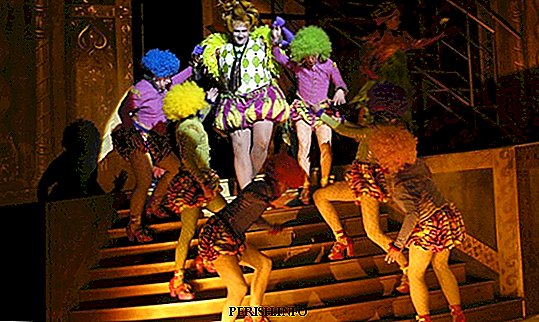
For example, in Act I, where the news of the depression of the young Prince is reported, the music is filled with elements of the deepest sorrow — burial rhythms, "groaning" intonations and "weak-willed" sighs. But the party of the royal heir, suffering from hypochondria, besides passive and mournful intonations, is saturated with ostinatny rhythms - with this Prokofiev wanted to convey the impression of "tediousness" and "deadly hopelessness" in scenes with this hero. In a similar vein, the musical characteristics of all the characters of the opera are given - all of them are shown with irony and considerable distortion.
The story of the creation of "Love for three oranges"
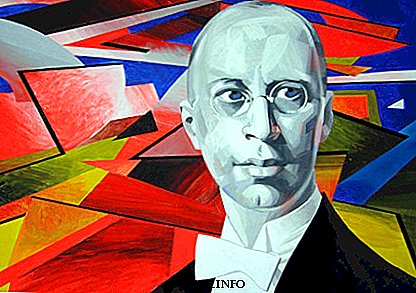
Writing an opera based on the popular Venetian play Prokofiev was recommended by director V.E. Meyerhold, who already had a similar experience. He was one of the co-authors of the free processing of this work, published in the theatrical edition "Love for Three Oranges", the editor-in-chief of which was Vsevolod Emilevich.
In 1916, Meyerhold set up on the site of the Mariinsky Theater Prokofiev Opera "Player"where the acquaintance of the legendary director and talented composer took place. Vsevolod Emilevich, who was very fond of Italian folk art, convinced Sergey Sergeyevich of the need to create fresh and innovative work. As conceived by the author, the opera was to be radically different from the usual bored stage productions.
In 1918, Prokofiev went on a tour of the United States, and on the way decided to read Carlo Gozzi’s play “Love for Three Oranges”. The unforced magical story so fascinated him that he instantly decided on the dramaturgy of the future work, the location of the scenes and the musical direction. In addition, Prokofiev and Meyerhold constantly corresponded and discussed all their creative ideas.
The American public was well received by the composer from Russia, and the Chicago theater made him an order to create a new performance. Prokofiev did not postpone the case and began to work hard on the opera.
In the process, the author slightly modified the content of the tale, for example, the giant Creon was replaced by the cook, the number of characters decreased several times. The composer came up with new characters (cranks, comedians, lyricists, imps, etc.) who appear by chance, but contribute to the main characters - discuss precedents, argue about art, touch on important spiritual themes.
In the autumn of 1919, the composition was completed and prepared for theatrical production.
Production history
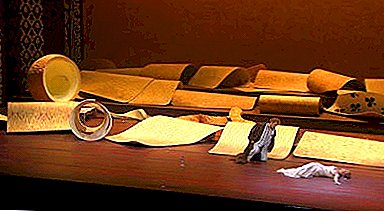
The Chicago Theater immediately accepted the finished score, but the premiere took place two long years later - the performance was presented to the public on December 30, 1921. Just a couple of months after the premiere, the performance was held in New York, and after such a stunning success, the opera instantly appeared in the repertoire of all world theaters.
Influential members of the USSR party, having heard about Sergey Sergeevich’s achievements, after much deliberation, came to the conclusion that the Soviet spectators are obliged to see the opera. In 1925, a respected member of the theater community I.V. was sent to France. Ekskuzovich, who successfully negotiated with Prokofiev. On February 18, 1926, the premiere of the performance took place on the stage of the Mariinsky Theater in Leningrad. The composer personally attended the performance and was extremely pleased with the result. A year later, the opera was staged in the Moscow Bolshoi Theater.
Among successful foreign productions can be distinguished performances in Berlin in Komishe Operas (1968), Milan in La Scala (1974) and Munich (1991).
Prokofiev's “Three Oranges” was destined to have a happy and long life. The performance is so fond of the audience that his productions are relevant at the present time. Directors continue their experiments on this creation of Prokofiev. In recent years, the production of Alexander Titel has been very popular. At the end of 2013, his work was presented at the Latvian National Opera, since 2016 it has been staged in Russia with minor changes. The director of the performance was able to create a bright, modern performance with a lively, amazing and humorous action. True, instead of the characters registered in the libretto - comedians, empty-headed, tragedians and lyricists, he actively involved police, firefighters, doctors, and representatives of the press. Prokofiev believed that a sense of humor and self-irony are the most important qualities for a person. That is why the directors and actors allowed themselves such "tomfoolery" on the stage.
"Love for three oranges" S. Prokofiev considered one of the most fun and cheerful opera creations of the XX century. It is perceived as big in one breath - it is so dynamic and fascinating. The composer talked about his innovative and bright work: "They tried to understand who I laugh at: the audience, the author of the fairy tale, or people without a sense of humor. They found in the opera both giggles, and challenge, and exaggeration, but I just created a fun performance."

Leave Your Comment